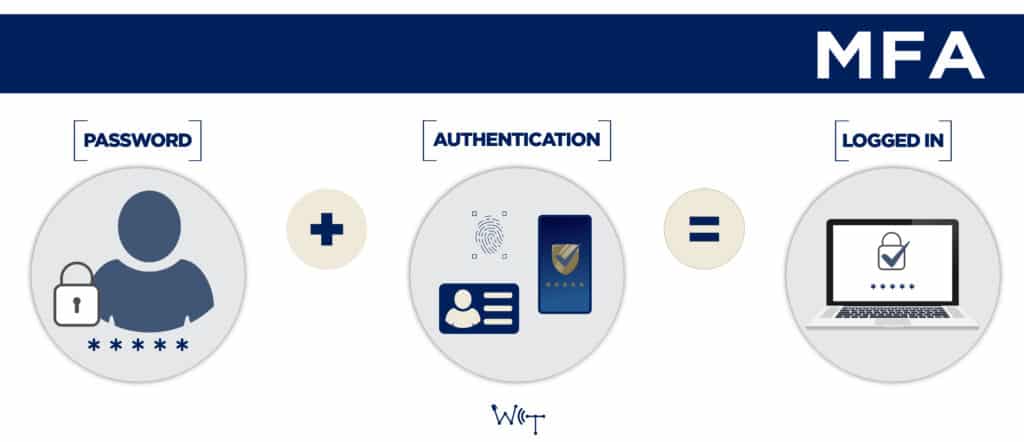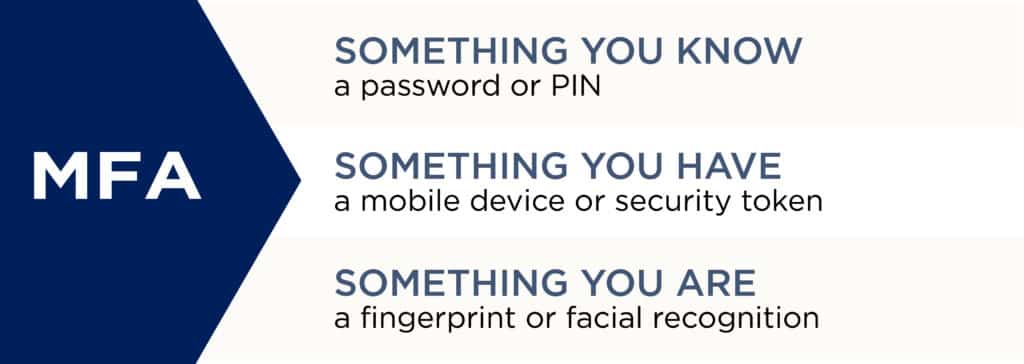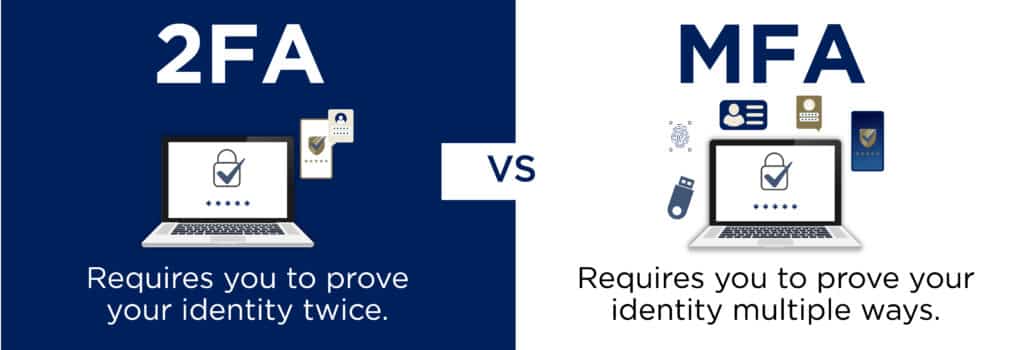Why MFA Matters: Protect Your Accounts
Cyberattacks are no longer rare—a cyberattack occurs every 39 seconds in 2023. That’s over 2,200 attacks per day. With most of these targeting user credentials, it’s clear that relying on passwords alone is no longer safe. This is where multi-factor authentication (MFA) steps in.
Cyberattacks have become a significant issue for organizations of all sizes, making MFA an essential cybersecurity solution for any organization. It protects your organization from data breaches, phishing scams, and credential theft. Let’s look at why MFA is crucial and how it works.

What is Multi-Factor Authentication (MFA)?
Multi-factor authentication (MFA) is a security method that requires users to verify their identity using two or more authentication factors before gaining access to a system or application.
These factors typically include:
- Something you know – like a password or PIN
- Something you have – like a mobile device or security token
- Something you are – like a fingerprint or facial recognition

An easy way to understand MFA is to think of an ATM: you need both your debit card (something you have) and your PIN (something you know) to access your money. If one factor is compromised, the account remains protected.
Why is MFA Important for Organizations?
- Passwords Alone Are Not Secure Enough
Passwords, even strong ones, are vulnerable. Phishing, keyloggers, and brute-force attacks can easily expose login credentials. In fact, 81% of hacking-related breaches involve stolen or weak passwords.
MFA adds an essential security layer that protects your data—even if your password is stolen.
- Reduces the Risk of Data Breaches
With MFA in place, attackers need more than just your password to gain access. Whether they try phishing emails or exploit reused passwords, MFA significantly lowers the risk of a successful breach.
For organizations that manage sensitive data—such as client records, employee details, and Social Security numbers—multi-factor authentication (MFA) offers a cost-effective and highly effective layer of protection.
- Secure Remote and Hybrid Workforces
In today’s hybrid work environment, employees access company apps from various devices and networks. MFA ensures that only authorized users can access your systems, no matter where they are working from.
By prompting identity verification through mobile apps, OTPs, or biometrics, MFA protects your business across locations and devices.
What’s the Difference Between MFA and 2FA?
You’ve probably heard of two-factor authentication (2FA) and might wonder how it differs from MFA.
- 2FA requires exactly two authentication factors.
- MFA requires two or more factors, offering more flexibility and additional layers of protection.
In short, every 2FA is MFA, but not every MFA is 2FA.

What is Adaptive or Risk-Based MFA?
Adaptive MFA, also known as risk-based MFA, takes security a step further by analyzing the context of each login attempt. It evaluates factors such as:
- Device type
- IP address
- Login location
- Time of access
- User behavior
If anything seems unusual, the system prompts for more verification steps. This dynamic authentication method is powered by AI and helps minimize friction for low-risk users while increasing protection against suspicious activity.
Is MFA Worth It?
Absolutely. With the average cost of cybercrime for businesses hovering around $13 million, MFA is not just a security best practice—it’s an organization necessity.
Multi-factor authentication protects your employees, clients, and business from cyber threats, reduces operational risk, and helps you stay compliant with data protection standards.
Ready to Secure Your Organization with MFA?
If you're ready to take the next step in cybersecurity, we can help implement MFA for your organization. Whether you're a small business or an enterprise, our solutions scale with your needs.
Contact us and see how MFA can strengthen your defenses today.

